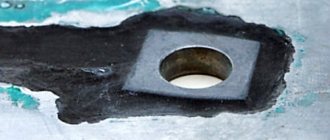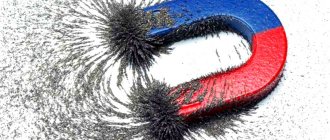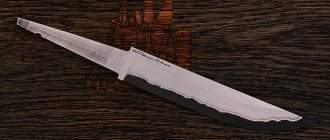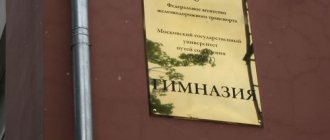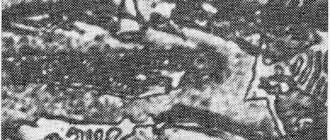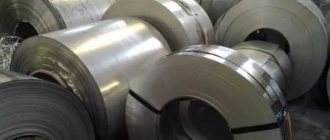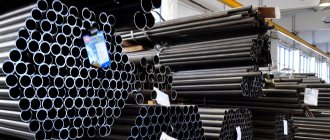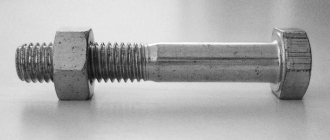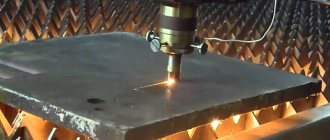Concrete is a material with high resistance to compression, but the tensile resistance that occurs when products bend under load leaves much to be desired. Reinforcement of concrete structures allows you to redistribute the load, prevent deformation and avoid destruction of the product. The most common classes are A1 and AZ fittings.
State standard
Requirements and standards for hot-rolled steel for reinforcing structures and products made of reinforced concrete are specified in GOST 5781-82.
The characteristic on the basis of which classes of reinforcing steel are distinguished is the yield strength. For class A1, the standardized value is 24 kgf/mm2; carbon steel grades St3sp, St3kp and St3ps are used for production. The chemical composition of reinforcing carbon steel is regulated in GOST 380.
A circular cross-section profile of the correct shape that meets the tolerances is a mandatory technical requirement for A1 reinforcement. This is the only class of high-quality products that does not have a corrugated surface.
Technical requirements
When producing A1 fittings, the finished product must meet the following parameters:
- Tensile strength 373 N/mm.kv
- When testing, the relative elongation during bending is 25%
- When cold, the product must withstand a 180-degree bend test. For products with a cross section of 6-20 mm, bending is carried out around a mandrel of the same diameter as the reinforcement bar itself; for larger thicknesses, the radius of the mandrel is selected equal to two diameters of the bar.
- The surface of the reinforcing steel should not have flaws, cracks, rolling sunsets and filming, but traces of rolled bubbles, minor inclusions of rust and scaliness are allowed.
Assortment
The range includes 14 standard sizes, differing in cross-section diameter. Reinforcement, with a thickness of 6-12 mm, is shipped from production in coils or rods; products with a larger cross-section are manufactured only in the form of rods.
The standard standard size of rods is 6-12 meters; by agreement between the manufacturer and the buyer, a range from 5 to 25 m is acceptable. The rods are manufactured:
- Measured length, including with the permissible inclusion of no more than 15% of the total mass of the batch, sections of at least 2 m in length.
- Unmeasured length, in this case it is possible to contain in a batch, but not more than 7% by weight, products measuring from 3 to 6 m.
Calculated (theoretical) weight for standard sizes of A1 reinforcement (During the calculation, tolerances were used - permitted diameter deviations were not taken into account, and the steel density was taken as 7850 kg/m.kb.):
| Diameter (mm) | Weight per meter (kg) | Number of meters per ton (m) |
| 6 | 0,222 | 4504,5 |
| 8 | 0,395 | 2531,65 |
| 10 | 0,617 | 1620,75 |
| 12 | 0,888 | 1126,13 |
| 14 | 1,21 | 826,45 |
| 16 | 1,58 | 632,91 |
| 18 | 2 | 500 |
| 20 | 2,47 | 404,86 |
| 22 | 2,98 | 335,57 |
| 25 | 3,85 | 259,74 |
| 28 | 4,83 | 207,04 |
| 32 | 6,31 | 158,48 |
| 36 | 7,99 | 125,16 |
| 40 | 9,87 | 101,32 |
Possible deviations
Maximum permissible deviations are regulated by GOST 2590 and, based on the calculated weight, are:
- from +9 to -7% for reinforcement sections 6 and 8 mm;
- from +5 to -6% for diameters from 10 to 14 mm;
- 3 - 5% for sections from 16 to 28 mm and other standard sizes.
The probability of providing mass for 1 linear meter must be at least 90%.
The permissible ovality is checked by measuring the cross-section of the rod, and the difference between the maximum and minimum diameters should not exceed the sum of the permissible deviations.
In case of supply of rods of measured length for products up to 6 m, maximum permissible deviations are provided from 25 to 50 mm, and for products over 6 m, from 35 to 70 mm, depending on the type of cutting used. High-precision rods that correspond to the given minimum deviations are manufactured at the customer’s request.
The curvature of rod reinforcement should not exceed 0.6% of the length.
Acceptance rules
Reinforcing steel is accepted in batches from profiles of the same standard size and class weighing up to 70 tons (it is permissible to increase it to the weight of the ladle melt). One quality document is issued for the entire batch indicating the profile number, class, and cold bending test results.
For control measurements of physical dimensions and determination of surface quality, at least 5% of the rods are selected from the batch, and if supplied in coils, two coils are selected. To test for bending, impact strength and tensile strength, two rods are selected from the batch. Samples to control the chemical composition are taken in accordance with GOST 7565.
Physical properties
| Steel grade Designation | Modulus of elasticity at 20°C kN/mm2 | Warm expansion between 20°C and | Thermal conductivity at 20°C W/m*K | Specific heat capacity at 20°C J/kg*K | Electrical resistance at 20°C Ohm*mm2/m | Magnetizability | ||
| 100°C | 400°С | |||||||
| 10°/K | 10°/K | |||||||
| 1.4305 | X8CrNiS 18-9 | 220 | 10,4 | 11,6 | 25 | 430 | 0,60 | Yes |
| 1.4301 | X5CrNi 18-10 | 200 | 16 | 17,5 | 15 | 500 | 0,73 | no`) |
| 1.4541 | X5CrNiTi 18-10 | 200 | 16 | 17,5 | 15 | 500 | 0,73 | no`) |
| 1.4401 | X5CrNiMo 17-12-2 | 200 | 16 | 17,5 | 15 | 500 | 0,75 | no`) |
| 1.4404 | X2CrNiMo 17-12-2 | 200 | 16 | 17,5 | 15 | 500 | 0,75 | no`) |
| 1.4571 | X6CrNiMoTi 17-12-2 | 200 | 16 | 17,5 | 15 | 500 | 0,75 | no`) |
| 1.4122 | X35CrMo17 | 200 | 13,0 | 300°C 14.0 | 15 | 500 | 0,80 | Yes |
| `) Small amounts of ferrite and/or martenite resulting from cold working increase magnetizability | ||||||||
Marking
Hot-rolled steel reinforcement A1 in the international classification is marked as A240.
The number in the name indicates the fluidity coefficient of the steel used for production multiplied by ten. For example, A 240 - coefficient 24 kgf/mm.sq., for A400 - 40 kgf/mm.sq. The higher the value, the stronger the steel, the more stress the rod can withstand before it begins to deform.
Any type of fittings can be subjected to additional temperature treatment, in which case the letters “At” are added to the end of the marking. If the metal is free of impurities and has a uniform distribution of carbon, the symbol “C” is added to the abbreviation, and when copper is added to the composition, the symbol “K” is added to improve the anti-corrosion properties.
Characteristics of stainless steels
The term “alloy stainless steel” is a collective term for more than 120 different grades of stainless steel. Over the decades, many different alloys have been developed to provide the best properties for each application. All these alloys have a common distinguishing feature: due to the chromium contained in the alloy, they do not require additional surface protection. This chromium present in the alloy forms a colorless transparent oxide layer on the surface, which itself heals when the surface is damaged due to the oxygen contained in the air or water. Stainless steels are grouped into DIN 17440 and DIN EN ISO 3506. Based on their crystal structure, stainless steels are divided into 4 main groups:
Martensitic alloy steels
According to their structure, this group includes materials with a chromium fraction of 10.5 – 13.0% and a carbon content of 0.2 – 1.0%. Other elements can be introduced as alloying additives. This carbon content allows for heat treatment - the so-called improvement. This makes it possible to increase strength.
Ferritic alloy steels (so-called chromium steels)
The proportion of chromium in the composition of these materials is 12–18%, the carbon content is very low - less than 0.2% They are non-hardening.
Austenitic alloy steels (so-called chromium-nickel / chromium-nickel-molybdenum)
Austenitic chromium-nickel steels exhibit a particularly good combination of machinability, mechanical properties and corrosion resistance. They are therefore recommended for a variety of applications and are the most significant group of stainless steels. The most important property of this group of steels is high corrosion resistance, which increases with increasing alloying content, especially chromium and molybdenum. As with ferritic steels, for austenitic steels, achieving high technological properties requires a fine-grained structure. As a final heat treatment to prevent the formation of precipitates, diffusion annealing is carried out at temperatures from 1000 to 1150°C, followed by cooling in water or air. In contrast to martensitic steels, austenitic steels are non-hardenable. The high ductility of austenitic steels guarantees good cold workability. The austenitic structure implies a content of 15–26% chromium and 5–25% nickel. By adding 2–6% molybdenum, corrosion resistance and acid resistance are increased. This also includes so-called stabilized stainless steels alloyed with titanium or niobium. These elements prevent the formation of chromium carbides during welding.
Austenitic-ferritic alloy steels (so-called duplex steels)
Duplex alloy steels, named after their two structural components, contain in their austenitic-ferritic structure 18 - 25% chromium, 4 - 7% nickel and up to 4% molybdenum.
Packaging, transportation, storage
The requirements are established by the interstate standard GOST 7566-94, and the features applicable only to this class of products are specified in GOST 5781-82:
The rods are packaged in bundles weighing up to 15 tons, tied with wire or wire rod. In some cases, by agreement with the consumer, the weight of one package is limited to 3 or 5 tons. A label indicating the reinforcing steel class A1 or yield strength marking A240 is attached to each bundle.
For products made of steel class A1, there are no special requirements for painting the ends of the rods, as for products of a higher class.
When storing and transporting rolled metal products, corrosion protection is used in accordance with GOST 9.014.
Comparison of fittings A1 and A3
The range of produced long rolled products is significantly wider than A1 and A3 (in the international classification A 400). But these two brands are the most common in everyday construction, for example A2 and A3 differ slightly in price, and class A4 and higher are used only in the construction of highly loaded objects.
Reinforcement A1 differs from A3 in corrugation (periodic profile). The weight per linear meter of these two brands is approximately the same.
The periodic profile of the A3 reinforcement provides better adhesion to concrete compared to the smooth surface of A1. But you have to pay for this shape by reducing the effective cross-section of the reinforcement with a constant weight per linear meter; this causes a reduction in the strength of the rods themselves by 6%, which has to be taken into account in structural calculations. In addition, the disadvantages of A400 include the occurrence of additional stresses in the steel during rolling to form a corrugated surface.
A240 - made of low-alloy steel, more ductile, but less durable; for grade A 400 - strength is a more important parameter.
A3 reinforcement provides more durable reinforcement for the finished reinforced concrete product, but at the same time, due to the peculiarities of production, it is less resistant to corrosion and has a high price. A1 reinforcement, in turn, better resists aggressive external chemical influences, is more plastic and easier to install, but does not have sufficient strength for use in loaded structures.
Physical properties
The physical properties of some steel grades are shown in comparison in the table below. Attention should be paid to the increased thermal expansion and reduced thermal conductivity of austenitic steels. Their electrical resistance is higher than that of unalloyed steels due to the presence of alloying components. The most important distinguishing feature of ferritic/martensitic chromium steels from chromium-nickel steels is magnetizability. In contrast to magnetizable chromium steels, austenitic steels exhibit virtually no magnetizability after diffusion annealing. Cold plastic deformation can change the structure of austenitic steels so that limited magnetizability can result. The presence of nickel still largely determines the magnetization of austenitic stainless steels, so that with an increased nickel content it is unlikely that it will be possible to significantly reduce the tendency to magnetization in the cold-worked state.
Application area
A1 reinforcement is universal, therefore, in one capacity or another, it is used in almost all types of reinforced concrete structures.
A240 reinforcement is mainly used in the construction of auxiliary structures - fences, concrete rings (pipes). In multi-storey and industrial construction, smooth A1 reinforcement is used for construction and masonry mesh, screeding, reinforcing walls for plaster, etc.
In the case where the design load allows, class A1 reinforcement is used independently. Beams are reinforced with a rod with a section of 12-32 mm, columns 14 - 36 mm, foundations 10-40 mm. In low-rise construction, rods of small sections 10 - 16 mm are more often used.
For A1 reinforcement, due to the lack of corrugation, the value of the first factor is reduced - this is the main reason for limiting the use of products of this class in highly loaded reinforced concrete structures.
In products made of high-strength reinforced concrete, thin A1 reinforcement with a cross-section of 6-8 mm. used as strapping for fixing thick bars of higher class reinforcement when constructing reinforced frames, as well as for strengthening the surface layer in large monolithic structures, for example, in the construction of dams, bridges, tunnels.
A1 fittings, due to their increased resistance to aggressive environments such as chlorine and natural gas, are widely used in the construction of industrial facilities in the oil refining, chemical and coal industries.
Rolled grade A1, in addition to reinforcing concrete structures, due to the successful combination of characteristics of plasticity, strength, as well as the ability to connect parts by welding, is widely used for the manufacture of decorative and load-bearing metal structures - gratings, fences, canopies, etc., as well as individual parts - embedded hinges, bolts, springs, rivets, etc.
Chemical composition of stainless steel
| Material number | Mo% | Ni% | V% | Other |
| 1.4406 | 2.00-2.50 | 10.0-12.0 | — | N 0.12-0.22 |
| 1.4418 | 0.80-1.50 | 4.00-6.00 | — | N≤0.020 |
| 1.4429 | 2.50-3.00 | 11.0-14.0 | — | N 0.12-0.22 |
| 1.4435 | 2.50-3.00 | 12.5-15.0 | — | N≤0.11 |
| 1.4436 | 2.50-3.00 | 10.5-13.0 | — | N≤0.11 |
| 1.4438 | 3.00-4.00 | 13.0-16.0 | — | N≤0.11 |
| 1.4439 | 4.00-5.00 | 12.5-14.5 | — | N 0.12-0.22 |
| 1.4460 | 1.30-2.00 | 4.50-6.50 | — | N 0.05-0.20 |
| 1.4462 | 2.50-3.50 | 4.50-6.50 | — | N 0.10-0.22 |
| 1.4465 | 2.00-2.50 | 22.0-25.0 | — | N 0.06-0.16 |
| 1.4466 | 2.00-2.50 | 21.0-23.0 | — | N 0.10-0.16 |
| 1.4505 | 2.00-2.50 | 19.0-21.0 | — | Cu 1.80-2.20; Nb 8x %C |
| 1.4506 | 2.00-2.50 | 19.0-21.0 | — | Cu 1.80-2.20; Ti 7x % C |
| 1.4509 | — | — | — | Ti 0.10-0.60; Nb 3xC+0.30-1.00 |
| 1.4510 | — | — | — | Ti 4x% (C+N)+0.15-0.80 |
| 1.4511 | — | — | — | Nb 12x% C 1.00 |
| 1.4512 | — | — | — | Ti 6x%(C+N)-0.65 |
| 1.4521 | 1.80-2.50 | — | — | N≤ 0.030, Ti4(C+N)+0.15-0.80 |
| 1.4529 | 6.00-7.00 | 24.0-26.0 | — | N 0.15-0.25; Cu 0.50-1.50 |
| 1.4532 | 2.00-3.00 | 6.50-7.80 | — | Al 0.70-1.50 |
| 1.4535 | 0.40-0.60 | — | 0.20-0.30 | Co 1.20-1.80 |
| 1.4539 | 4.00-5.00 | 24.0-26.0 | — | N≤ 0.15; Cu 1.20-2.00 |
| 1.4541 | — | 9.00-12.00 | — | Ti(5x%C)-0.70 |
| 1.4542 | ≤0.60 | 3.00-5.00 | — | Cu 3.00-5.00; Nb 5xC≤0.45 |
| 1.4550 | — | 9.00-12.0 | — | Nb 10x%C≤1.00 |
| 1.4558 | — | 32.0-35.0 | — | Al 0.15-0.45; Ti 8x(C+N)≤0.60 |
| 1.4562 | 6.00-7.00 | 30.0-32.0 | — | Cu 1.00-1.40; N 0.15-0.25 |
| 1.4563 | 3.00-4.00 | 30.0-32.0 | — | Cu 0.70-1.50; N≤0.11 |
| 1.4565 | 3.00-5.00 | 16.0-19.0 | — | N 0.30-0.50; Nb≤0.15 |
| 1.4567 | — | 8.50-10.5 | — | N≤0.11; Cu 3.00-4.00 |
| 1.4568 | — | 6.50-7.80 | — | Al 0.70-1.50 |
| 1.4571 | 2.00-2.50 | 10.5-13.5 | — | Ti 5x%C≤0.70 |
| 1.4575 | 1.80-2.50 | 3.00-4.50 | — | Nb 12xC≤1.20; N≤0.035; C+N≤0.040 |
| 1.4577 | 2.00-2.50 | 24.0-26.0 | — | Ti 10x%C≤0.60 |
| 1.4580 | 2.00-2.50 | 10.5-13.5 | — | Nb 10x%C≤1.00 |
| 1.4582 | 1.30-2.00 | 6.50-7.50 | — | Nb 10x%C |
| 1.4583 | 2.50-3.00 | 12.0-14.5 | — | Nb Z 8x%C |
| 1.4586 | 3.00-3.50 | 21.5-23.5 | — | Cu 1.50-2.00; Nb Z 8x% C |
